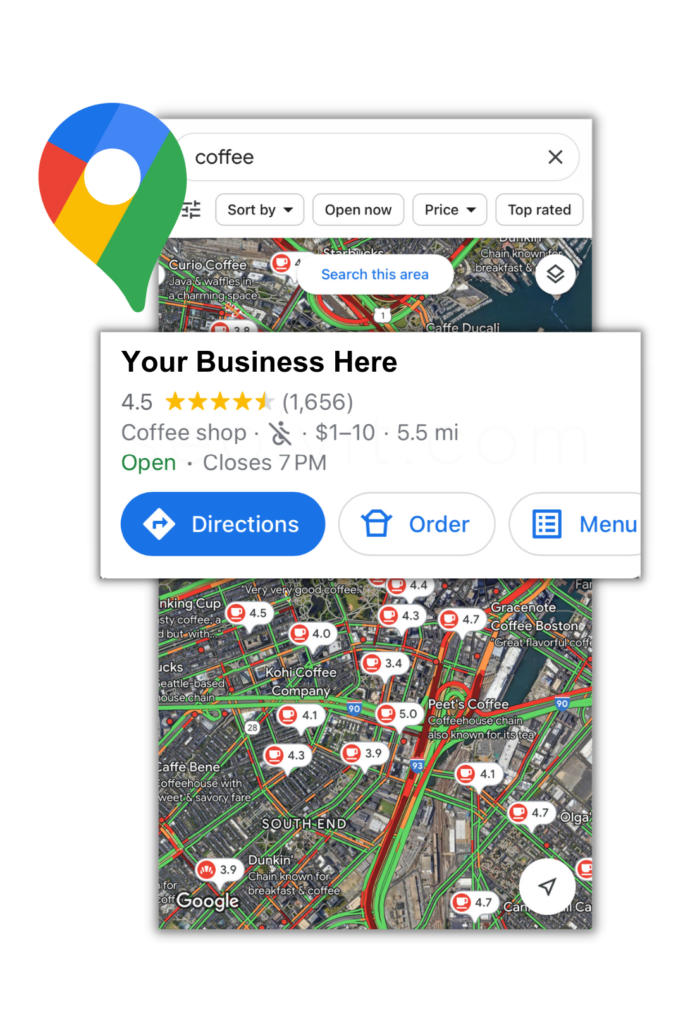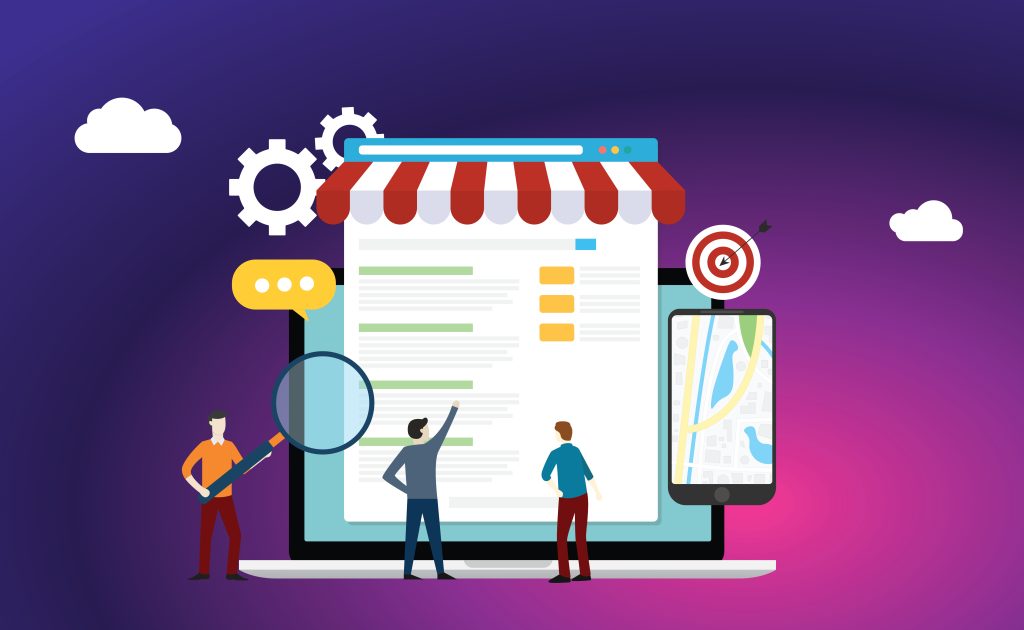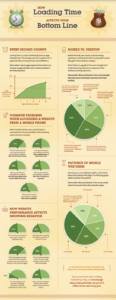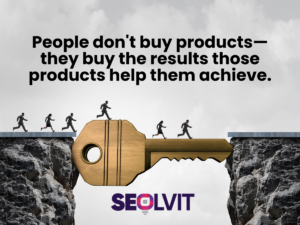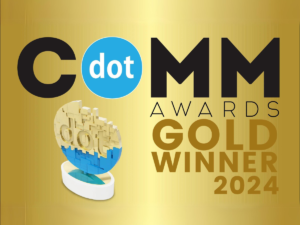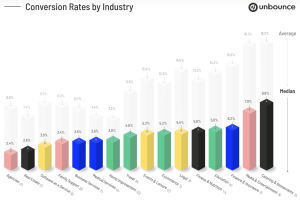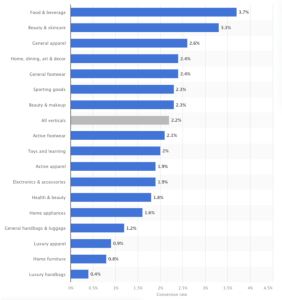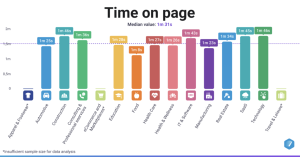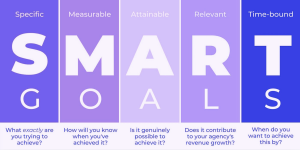In today’s competitive business landscape, it’s not enough to offer a great product or service. Small businesses must also have a well-crafted marketing strategy to reach their target audience and stand out from the competition.
But with so many marketing tactics and channels available, it can be overwhelming to know where to start.
That’s why we’ve compiled 30 ideas for your small business marketing strategy to help you attract new customers, retain existing ones, and ultimately grow your business.
From social media and email marketing to community involvement and customer referrals, this guide covers a variety of marketing strategies to help your small business succeed.
1. Develop a Clear Brand Identity
Developing a clear brand identity is a crucial component of any small business marketing strategy.
Your brand identity should reflect your business values and communicate a consistent message to your target audience across all marketing channels.
To develop a strong brand identity, define your business’s core values, mission, and unique selling proposition. This will help you differentiate your brand from competitors and communicate a clear message to potential customers.
Next, create a visual identity that aligns with your brand values and resonates with your target audience. This includes designing a logo, selecting brand colors and fonts, and creating marketing materials that reflect your brand personality.
In addition to your visual identity, your brand voice and messaging should be consistent across all channels. This includes your website, social media profiles, email marketing, and other marketing materials.
Your messaging should be clear, concise, and compelling, addressing your customers’ pain points and needs.
2. Craft a Website That Represents Your Business
A website is no longer a luxury for businesses; it’s a necessity.
In today’s digital age, a website is the first point of contact for most customers. Therefore, creating a website that is mobile-responsive, SEO-optimized, and user-friendly is crucial for any small business marketing strategy.
Mobile friendly:
A mobile-responsive website is designed to adapt to various screen sizes. With most internet searches happening on mobile devices, having a website that looks great on a smartphone or tablet is essential. It ensures customers can easily navigate your website, read your content, and interact with your brand.
Search engine optimization:
Search engine optimization (SEO) is the process of optimizing your website to rank higher in search engine results pages (SERPs). When people search for keywords related to your business, you want your website to be one of the first results they see.
By incorporating relevant keywords, optimizing page titles and descriptions, and building backlinks, you can improve your website’s SEO and attract more organic traffic.
User experience:
User experience (UX) is all about ensuring your website visitors have a positive experience when interacting with your site. A well-designed website with clear navigation, engaging content, and an easy-to-use interface will keep visitors on your site longer, reduce bounce rates, and increase the likelihood of conversion.
When creating a website for your business, it’s essential to keep these three elements in mind. A mobile-responsive website that is SEO-optimized and user-friendly can help you attract more traffic, generate leads, and ultimately increase sales. So, invest in a professional website design that reflects your brand and provides customers with an exceptional online experience.
3. Leverage Social Media Marketing
Social media platforms have become an integral part of a small business’s marketing strategy. With billions of active users, social media provides an opportunity to reach a vast audience and engage with potential customers.
By having a presence on popular social media platforms like Facebook, Instagram, Twitter, and LinkedIn, you can promote your brand, products, and services to a large and diverse audience.
To make the most out of social media, it’s important to develop a social media strategy that aligns with your business goals. This involves identifying your target audience, understanding their preferences, and tailoring your content accordingly.
For instance, if you specialize in athletic apparel catering to young adult women, you can enhance your brand presence by curating engaging workout videos or nutritious recipes.
One effective social media strategy is regularly posting engaging and relevant content that resonates with your target audience.
This could include photos, videos, infographics, blog posts, and news articles related to your industry.
It’s also important to interact with your followers by responding to comments, messages, and reviews. This helps to build a relationship with your audience and establish trust.
Humanizing your brand is a significant aspect of leveraging social media. Establish a genuine connection by showcasing the faces behind your brand. After all, people naturally connect with other people.
Another way to leverage social media is through advertising. Most social media platforms offer targeted advertising options that allow you to reach specific demographics based on factors like age, location, interests, and behavior. By creating targeted ads, you can reach potential customers who may not have found your business otherwise.
4. Craft a Robust Content Marketing Strategy
Developing a content marketing strategy can be a powerful way to engage with your target audience and establish your business as a thought leader in your industry. It’s essential to create content that provides value to your audience, whether informative, educational, or entertaining.
Start by identifying your target audience’s pain points and challenges, and then create content that addresses those issues. This could include blog posts, infographics, videos, podcasts, or whitepapers. Be sure to use various formats to keep your content fresh and engaging.
When developing your content, consider the importance of search engine optimization (SEO). Incorporate relevant keywords and phrases into your content to help rank higher in search engine results pages (SERPs).
Remember, creating high-quality content takes time and effort, but it’s worth the investment. By providing value to your audience, you’ll build trust and credibility, increasing brand loyalty and customer retention.
5. Implement Email Marketing
Email marketing is an effective and affordable way to stay in touch with your customers and keep them engaged with your business. By creating targeted and personalized email campaigns, you can inform your customers about new products, promotions, and events while building a strong relationship with them.
To get started with email marketing, you’ll need to gather a list of subscribers who have opted-in to receive your emails. This can be done through your website, lead magnets, ads, social media, or by collecting email addresses in-store. Once you have a list, you can use email marketing software to design and send newsletters, promotional offers, and sequences.
To make your email campaigns more effective, consider segmenting your subscribers based on their interests, purchase history, or demographic information. This allows you to create more targeted and personalized content that is more likely to resonate with your audience.
It’s also important to optimize your emails for mobile devices since many people now check their email on their smartphones. Use a mobile-friendly email template and keep your subject lines short and attention-grabbing to encourage recipients to open your emails.
By utilizing email marketing, you can keep your customers informed and engaged with your business, increasing loyalty and sales.
6. Offer Promotions
Offering promotions and discounts can be an effective way to incentivize new customers to try your products or services and keep existing ones coming back for more.
You can use various promotional strategies such as limited-time offers, referral programs, loyalty rewards, or bundling products or services together.
However, it’s essential to ensure that these promotions align with your overall business goals and don’t harm your profit margins.
Additionally, make sure to promote your offers effectively through your website, social media channels, email marketing, and other advertising platforms to reach your target audience.
7. Leverage Industry Events to Build a Network
Attending industry conferences, trade shows, and events can be an effective way to network with potential customers and connect with other industry leaders.
These events provide a platform to showcase your business and establish new relationships with individuals who can help you grow.
When attending these events, it’s important to have a clear plan and set goals for what you want to achieve. Research the speakers and attendees in advance to identify those you’d like to meet. Be sure to bring plenty of business cards and marketing materials to distribute.
Also, consider participating as a speaker or exhibitor at events to increase your visibility and establish your business as an authority in your industry.
By leveraging these opportunities, you can make valuable connections, gain insights, and potentially generate new business leads.
8. Boost Your Online Presence With Google Ads
Google Ads is an effective tool for small businesses looking to increase their online visibility and drive traffic to their website.
With Google Ads, you can create targeted ads that appear at the top of search engine results pages, allowing you to reach potential customers actively searching for products or services related to your business.
To get the most out of your Google Ads campaigns, it’s important to do thorough keyword research and create compelling ad copy that resonates with your target audience.
You’ll also need to set a budget and bid on relevant keywords to ensure your ads are shown to the right people at the right time.
One of the key benefits of Google Ads is its flexibility. You can easily adjust your budget and targeting settings to optimize your campaigns and get the best results. With the right strategy, Google Ads can be a powerful tool for driving traffic, increasing conversions, and growing your business.
9. Leverage Press Releases for Brand Visibility
Press releases are a powerful way to gain media coverage and increase brand visibility.
These releases allow you to showcase your company’s story, achievements, new product or service offerings, or company updates. A well-crafted press release can generate interest from journalists, bloggers, and influencers who can amplify your message to a wider audience.
When crafting your press release, focus on creating a compelling headline that grabs attention and conveys the essence of your message. Include relevant quotes, statistics, and details that help tell the story of your news.
Distribute your press release through a reputable distribution service to reach your target audience, and follow up with journalists and influencers to encourage coverage.
Press releases can be an effective tool to increase brand awareness and drive traffic to your website. By sharing your news with the right audience, you can generate interest and build momentum for your brand.
10. Tap Into the Power of Word-Of-Mouth Marketing
Word-of-mouth marketing is still one of the most effective ways to attract new customers. By offering referral incentives, you can encourage satisfied customers to spread the word about your business to their friends and family. This can be as simple as offering a discount or special offer to both the referrer and the new customer.
You can also consider running a referral program that rewards customers for multiple successful referrals.
Referral incentives not only help attract new customers but also help build customer loyalty and trust.
When customers feel valued and appreciated, they are more likely to continue doing business with you and recommend your services to others.
11. Boost Your Local Presence With SEO Techniques
Local SEO techniques can help small businesses rank higher in search engine results pages for relevant keywords. This means that potential customers in your local area can more easily find your business when they search for related products or services.
Some key local SEO tactics include optimizing your website for location-specific keywords, creating Google My Business listings, and building local citations through online directories.
By implementing these strategies, you can improve your business’s visibility in local search results and attract more targeted traffic to your website.
In addition, local SEO can also help you build trust and credibility with your local community, making it more likely that potential customers will choose your business over competitors.
Overall, local SEO is an essential part of any small business marketing strategy looking to improve their online presence and reach new customers in their local area.
12. Create a Referral Program to Grow Your Customer Base
Developing a referral program is a cost-effective way to attract new customers and grow your business. Satisfied customers often recommend your products or services to their friends and family.
By incentivizing these referrals with rewards such as discounts, free products, or gift cards, you can encourage your existing customers to become brand advocates and help spread the word about your business.
To create a successful referral program, start by identifying what rewards will motivate your customers to refer their loved ones.
You should also make it easy for customers to share your business with their networks by providing them with referral codes or links to share on social media.
Finally, track and measure the success of your referral program to determine its effectiveness and make adjustments as needed.
With a well-designed referral program, you can turn your satisfied customers into a powerful marketing force that can help your business grow.
13. Leverage Influencer Marketing to Reach a Wider Audience
Influencer marketing has become a popular way to reach a wider audience and increase brand awareness.
By partnering with influencers, who have a dedicated following on social media platforms such as Instagram, YouTube, and TikTok, you can tap into their audience and promote your products or services to a new group of potential customers.
To leverage influencer marketing, you should first identify the right influencers who align with your brand and target audience. Look for influencers who have a significant following and engagement rate, as well as those who have expertise in your industry.
Once you have identified potential influencers, reach out to them and propose a collaboration that will benefit both parties.
You can offer them free products or services in exchange for promoting your brand to their followers, or you can compensate them with a fee for their services.
14. Harness the Power of User-Generated Content
User-generated content (UGC) has become a valuable asset for businesses, providing an authentic and engaging way to promote products or services.
UGC refers to content created by customers or users of a brand, such as reviews, testimonials, photos, videos, and social media posts.
To harness the power of UGC, encourage your customers to share their experiences and opinions about your brand. This can be done through social media campaigns, contests, or simply asking for feedback.
Make it easy for customers to tag your brand or use a specific hashtag when sharing UGC, so you can easily find and curate the content.
Once you have collected UGC, showcase it on your website, social media channels, and marketing materials. This allows potential customers to see real-life experiences and testimonials from satisfied customers, which can build trust and credibility.
Moreover, actively engage with UGC by responding to comments, thanking customers for their contributions, and sharing their content. This not only encourages more UGC but also fosters a sense of community around your brand.
By incorporating UGC into your marketing strategy, you can tap into the power of social proof and leverage the authentic voices of your customers to drive brand awareness, increase engagement, and attract new customers.
15. Enhance Customer Experience with Informative Instructional Videos
In today’s digital age, leveraging the power of video marketing is essential for small businesses. One effective strategy is to create instructional videos that educate your audience on how to use your products or services.
By providing valuable information and guidance, you can enhance the customer experience, foster loyalty, and drive sales.
To create impactful instructional videos, identify the most common pain points or challenges your customers face.
Develop step-by-step tutorials with clear and concise instructions, making it easy for viewers to follow. Focus on solving specific problems or providing helpful tips that add value to your customers’ lives.
When creating instructional videos, consider the visual and audio elements to ensure high production quality. Use professional equipment or seek assistance from a video production expert if needed.
Additionally, consider incorporating engaging visuals, animations, and demonstrations to enhance viewer engagement and comprehension.
Publish instructional videos on platforms like YouTube, your website, Instagram, or TikTok. Optimize the video titles, descriptions, and tags with relevant keywords to improve search visibility. Promote those videos across your marketing channels, including email newsletters, blog posts, and social media posts, to reach a wider audience.
By providing valuable educational content through instructional videos, you establish yourself as an authority in your industry and build trust with your audience. This, in turn, can lead to increased customer satisfaction, loyalty, and ultimately, business growth.
16. Host Webinars to Establish Your Business as an Industry Expert
Hosting webinars is a great way to provide value to your audience and position your business as a thought leader in your industry.
You can use webinars to educate your target audience on industry topics, provide tips and tricks for using your products or services, or even conduct live demonstrations.
To make the most out of your webinars, promote them through your website, email marketing campaigns, ad campaigns, and social media platforms. You can also record the webinar and make it available on your website for those who couldn’t attend live.
By offering valuable information and insights through your webinars, you can attract new leads and deepen your relationship with existing customers.
You can also use webinars to collect feedback from your audience, which can be used to improve your products or services and better understand your target market’s needs.
With the right approach and promotion, webinars can be a highly effective marketing tool for small businesses looking to establish their authority in their industry.
17. Develop a Customer Loyalty Program to Incentivize Repeat Business
Developing a customer loyalty program is an effective way to incentivize repeat business and foster long-term relationships with your customers.
This program can take many forms, such as a points-based system where customers earn rewards for their purchases, exclusive discounts, or early access to new products or services.
By offering perks beyond the basic transactional relationship, you create a sense of community and value that keeps customers coming back.
In addition, this program can also generate valuable customer data that you can use to tailor your marketing efforts to serve your audience better.
For example, you can use the data to personalize your communication, offer targeted promotions, or introduce new products or services that align with your customer’s needs and preferences.
A well-designed customer loyalty program can not only drive sales but also build brand advocacy, as satisfied customers are more likely to refer your business to others.
18. Create a Blog to Share Insights With Your Target Audience
Use the blog to provide insights about your industry, company news, and helpful tips that can benefit your audience. Remember, content is queen.
Consistently publishing high-quality blog content can establish your business as a thought leader in your industry and help you build a relationship with your audience. This can lead to increased engagement with your brand and drive more traffic to your website.
Use your blog to connect with potential customers and provide them with valuable information to help solve their problems or answer their questions.
Incorporate calls-to-action in your blog posts to drive conversions and encourage readers to take the next step in their customer journey.
By creating a blog that provides value to your audience, you can build trust and credibility with potential customers and position your business for long-term success. And it also helps your SEO efforts!
19. Utilize Video Marketing to Create Engaging Content
Video marketing is an effective way to reach and engage with potential customers.
By creating engaging video content that showcases your products or services, you can capture your audience’s attention and build brand awareness.
Videos can also be used to demonstrate how to use your products or provide helpful tips and advice to your target audience.
Platforms like YouTube and Vimeo are great for hosting and sharing your video content. Conversely, social media channels like Facebook and Instagram allow you to reach a wider audience.
With the rise of mobile usage, it’s important to ensure that your videos are optimized for mobile viewing.
By incorporating video marketing into your overall marketing strategy, you can increase engagement and drive conversions.
20. Offer Free Trials to Encourage Potential Customers to Try Them Out
To entice potential customers and give them a firsthand experience of your products or services, offer free trials or samples.
This marketing tactic is a great way to build trust and credibility with your target audience while showcasing the benefits of what you offer.
By providing free samples or trials, you are giving potential customers a chance to see how your product or service can add value to their lives before committing to a purchase.
Additionally, offering free trials or samples can increase brand awareness as satisfied customers share their positive experiences with others.
You can use various channels to promote these trials or samples such as social media, email marketing, or website pop-ups.
It is crucial to provide clear instructions on how to claim the free trial or sample and ensure that the process is hassle-free.
21. Leverage Customer Testimonials to Establish Trust With Potential Customers
Customer testimonials and reviews are powerful tools for building trust and credibility with potential customers.
People are more likely to trust the experiences and opinions of their peers than they are to trust a company’s advertising.
By featuring customer testimonials and reviews on your website, social media pages, and other marketing materials, you can showcase the positive experiences that people have had with your business.
This can help you establish trust with potential customers considering purchasing your products or services. Additionally, it can provide valuable feedback for your business and help you identify areas where you can improve.
Encourage satisfied customers to leave reviews and testimonials by making the process easy and offering incentives, such as discounts or freebies.
22. Develop Partnerships With Complementary Businesses to Offer Bundled Packages or Promotions
Partnering with complementary businesses can be a powerful way to increase your customer base and boost your revenue.
By teaming up with other businesses that share your target audience, you can offer bundled packages or promotions that provide more value to your customers and create a win-win situation for all involved.
For example, a gym could partner with a healthy meal delivery service to offer a discount on their services when customers sign up for both. This can help both businesses reach new customers, increase sales, and improve customer loyalty.
When developing partnerships, it’s important to choose businesses that align with your values and brand image. Look for businesses that complement your products or services and share your target audience. You can also consider attending industry events or networking with other businesses to find potential partners.
Once you have established partnerships, be sure to promote them on your website and social media channels to maximize visibility and attract new customers. By working with other businesses, you can create a powerful marketing strategy that benefits everyone involved.
23. Sponsor Local Events or Teams to Increase Brand Awareness in Your Community
Sponsoring local events or teams is an effective way to increase brand awareness in your community.
By sponsoring a local event or team, your business can gain exposure to a wider audience and demonstrate its commitment to supporting the community. This can help to build a positive reputation and create a sense of goodwill towards your brand.
When choosing which events or teams to sponsor, consider your target audience and the values that your business represents. Look for events or teams that align with your brand and will allow you to connect with potential customers. For example, if you sell athletic apparel, consider hosting an in-person workout session.
In addition to increasing brand awareness, sponsoring local events or teams can also provide opportunities for networking and building relationships with other businesses and community members.
This can lead to new partnerships and collaborations that benefit your business long-term.
To maximize the impact of your sponsorship, consider offering special promotions or discounts to attendees or team members. This can help to encourage them to try your products or services and build customer loyalty.
24. Utilize Chatbots or Automated Messaging to Provide Quick and Personalized Customer Service
In today’s fast-paced world, customers expect quick and efficient service from businesses. One way to meet this expectation is by implementing chatbots or automated messaging systems.
These tools can handle routine customer inquiries and requests, providing quick and tailored responses.
Chatbots and automated messaging can be used on websites, social media, or messaging apps to engage with customers in real-time, reducing wait times and improving customer satisfaction.
They can also help businesses save time and resources by automating repetitive tasks. Thus, allowing human customer service agents to focus on more complex issues. By providing fast and personalized customer service, businesses can improve their reputation and build loyal customers more likely to return for future purchases.
25. Use Retargeting Ads to Re-Engage With Your Previous Customers
Retargeting ads are a type of online advertising that targets users who have previously interacted with your website or online content.
This technique allows you to reconnect with potential customers who have already shown an interest in your business.
By using retargeting ads, you can keep your business top-of-mind for users who have already engaged with your brand, and encourage them to revisit your website or make a purchase.
Retargeting ads can be customized to target specific user behaviors, such as abandoning a shopping cart or visiting a specific page on your website.
This level of personalization can increase the likelihood of conversion, and ultimately drive sales for your business.
Additionally, retargeting ads typically have higher click-through rates and lower costs per click than other forms of online advertising, making them a cost-effective way to reach potential customers.
26. Boost Your Business With Guerrilla Marketing
Guerrilla Marketing is a marketing strategy that involves executing unconventional and eye-catching campaigns in unexpected locations or through unconventional methods to grab attention and create a buzz.
It challenges traditional marketing norms by using creativity, surprise, and out-of-the-box thinking to engage the target audience in unique and memorable ways.
With Guerrilla Marketing, businesses strive to make a lasting impact without relying on large advertising budgets. Instead, they rely on unconventional tactics, often leveraging the element of surprise and novelty to capture people’s attention and generate word-of-mouth buzz.
This approach can involve activities such as unexpected flash mobs, public stunts, interactive installations, or using unconventional outdoor spaces for marketing purposes. The goal is to create a memorable experience that sparks conversations and generates organic publicity. By breaking through the clutter of traditional advertising, Guerrilla Marketing aims to make a deep and lasting impression on the audience.
Guerrilla Marketing campaigns often tap into emotions, humor, or surprise, leaving a strong imprint in people’s minds. They aim to create an emotional connection between the brand and the target audience, fostering brand loyalty and word-of-mouth advocacy.
One of the key advantages of Guerrilla Marketing is its potential for virality. When executed effectively, these campaigns can gain significant traction on social media platforms, spreading rapidly and reaching a broader audience than the initial campaign scope. This amplification effect can result in increased brand exposure and awareness.
27. Use Geofencing to Target Potential Customers in Specific Geographic Locations
Geofencing is a location-based marketing strategy that allows businesses to target potential customers within a specific geographic area. By setting up a virtual boundary around a physical location, such as a store or event, businesses can deliver personalized messages and promotions to people within the defined area who have opted-in to receive them.
This technology uses GPS, Bluetooth, or Wi-Fi signals to detect when a customer enters or leaves a geofenced area and triggers a pre-programmed action, such as a push notification or a targeted ad. Geofencing can be a powerful tool for businesses looking to increase foot traffic, drive sales, and promote brand awareness.
By leveraging this technology, businesses can reach customers who are nearby and interested in their products or services, increasing the likelihood of conversion and customer loyalty.
Geofencing is particularly effective for local businesses, event marketing, and retail promotions. It also provides valuable data on customer behavior and can help businesses optimize their marketing efforts.
28. Implement Cause Marketing to Make a Positive Impact and Connect With Socially-Conscious Consumers
Cause Marketing is a powerful strategy that involves partnering with nonprofit organizations or supporting social causes to demonstrate your brand’s commitment to making a positive impact.
By aligning with a cause that resonates with your target audience, you can build trust and loyalty among socially-conscious consumers.
This approach goes beyond traditional marketing efforts and emphasizes corporate social responsibility.
Through collaborations, donations, and community involvement, businesses can showcase their values, generate positive publicity, and differentiate themselves from competitors.
By authentically supporting a cause, businesses can make a meaningful difference in society. Also, they can attract customers who prioritize ethical purchasing decisions.
29. Harness the Power of Personalized Direct Mail
Personalized direct mail is a marketing approach that involves sending tailored physical mail pieces to recipients based on their preferences, behaviors, or demographics.
This strategy works by delivering highly relevant content directly to individuals, creating a personalized and engaging experience.
By customizing offers, addressing recipients by name, and providing tailored product recommendations, personalized direct mail establishes a genuine connection and captures attention.
The tangible nature of direct mail, combined with its personalization, stands out in today’s digital clutter, making a lasting impression on recipients.
This approach boosts response rates, enhances customer engagement, and cultivates brand loyalty, making personalized direct mail an effective marketing tool.
30. Leverage data analytics to measure the effectiveness of your marketing campaigns
Data analytics has become a crucial aspect of modern marketing strategies. It enables businesses to measure the effectiveness of their campaigns, track user behavior, and make informed decisions based on data.
By leveraging data analytics tools, businesses can gain valuable insights into their customers’ preferences, behavior, and needs.
This data can help to optimize marketing efforts, improve targeting, and personalize the customer experience.
By tracking metrics such as click-through rates, conversion rates, and customer engagement, businesses can measure the impact of their marketing campaigns and adjust their strategy accordingly.
Making data-driven decisions can lead to more efficient and effective marketing. Thus, increasing customer acquisition, and retention, and ultimately driving revenue growth.
Therefore, leveraging data analytics should be a critical component of any marketing strategy.
In conclusion,
Businesses have a wide array of effective marketing strategies at their disposal to enhance visibility, build their brand, and attract new customers.
By combining these strategies and regularly evaluating their effectiveness, businesses can optimize their marketing efforts and achieve their desired outcomes. However, crafting and implementing a comprehensive marketing strategy can be a complex task if done without guidance.
If you’re seeking guidance and support to navigate the intricacies of marketing, we’re here to help you.
Schedule a free growth marketing session with our experts by clicking here.
Our team is ready to assist you in developing and executing tailored marketing strategies for your small business’s success!
